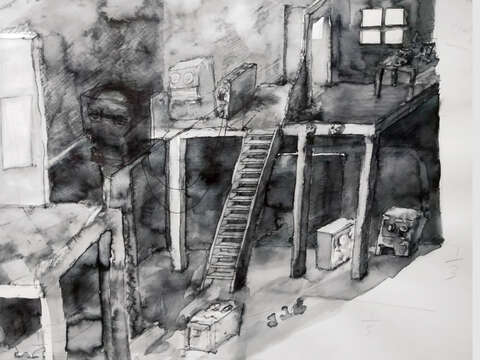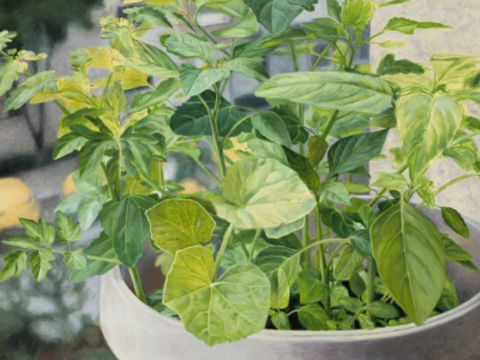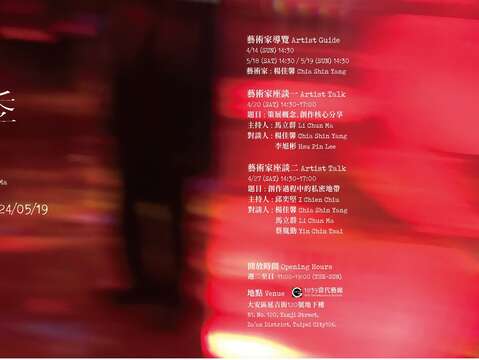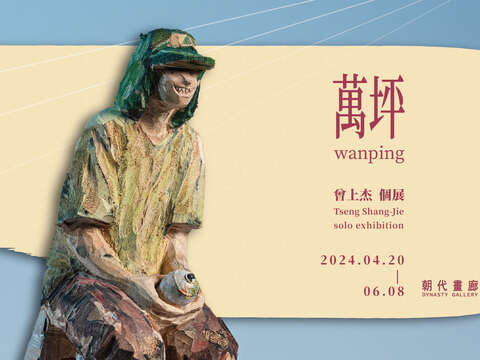Post date:2022-03-14
Updates:2022-03-14
680
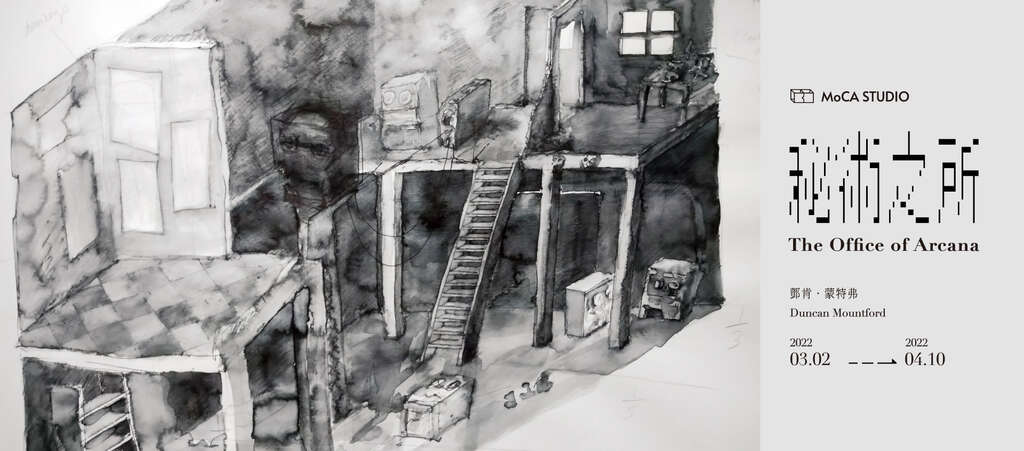
- Event Time
- 2022-03-02~2022-04-1010:00 - 18:00
- Event Location
- No.39,Chang'an West Road, Datong Dist., Taipei City Taiwan, R.O.C
The Office of Arcana is a memory, or maybe a foretelling. It is a segment of a larger Office, a place where there are more corridors, more rooms. In this fragment there are only six. At the end of each corridor is a closed door, and through the window of each door can be seen further spaces.
A series of ideas and images underlie this installation, although no one idea is given prominence. The Office of Arcana exists as a space to be explored, as a set of images and fragments that can be decoded in different ways. There is no one meaning. It is, to quote, all a matter of perspective.
The starting point for the installation was a series of ideas that connected certain historical and contemporary military developments with the history of arcane thought in the UK. Bringing together these two areas of disparate knowledge began as a way to question those (including the artist) who can be seduced into believing they know the way things are. As the ideas developed the speculative connections were revealed as being based on historical events, or maybe on the single fact that with a collection of fragmented facts connections can always be made1. Further themes and concepts began to emerge, specifically a growing realisation that the world is changing, and that the industrial/financial philosophy that once seemed central to globalization also contained the seeds of its own destruction.
The sense of the haunted landscape of the UK fed into the ideas, together with the recognition of similar places in Taiwan, places where structures could be the ruins of an unspecified future. The once derided literature of science fiction now seems to catch the present state with greater clarity than those who stated we were at the end of history (though in a way maybe we are). The land is haunted by what might have been2.
The corridors began with memories of exploring ruins in Liverpool, of government institutional spaces, offices for interviews, of spaces glimpsed through half-open doors. Corridors that symbolise interrogation and bureaucratic inertia, corridors that lead nowhere. In addition to the experience of actual abandoned spaces the installation has been influenced by the imagery and ideas of British science-fiction television programmes, and science-fiction films, of the 1960’s and 1970’s (the artist’s formative years). In these fictions alternative realities were conjured with plywood and models, producing worlds that allowed imagination to complete the scenario3.
There is also the influence of the numerous abandoned industrial and military buildings to be found in Taiwan, spaces that exert a fascination as initiators of speculative narratives. The installation contains elements of autobiography, with memories of the UK interweaving with current experiences of Taiwan.
Parts of the installation draw on the visual language of museum dioramas, puppet theatres, film sets that confuse simple readings of space and perspective, and the narrative sculptures to be found in European sacred spaces. The relationship with the miniature, and how there is an imaginative leap into the scaled-down spaces is perhaps analogous to the suspension of disbelieve that lies at the heart of a narrative installation and a theatrical set. The viewer becomes a participant in the work, an active presence4.
It is all a matter of perspective5.
1 | Various examples of this can be found, from the drawing of canals on Mars to Ley Lines. From Foucault’s Pendulum to The Illuminatus Trilogy narratives are woven from disconnected events. Robert Markley Dying Planet, Mars in Science and the Imagination has information on the perception of the Martian Canals; Alfred Watkins The Old Straight Track for ley lines; Umberto Eco, Foucault’s Pendulum, and Robert Shea and Robert Anton Wilson The Illuminatus Trilogy both deal with narratives constructed from disparate facts and unhinged speculation.
2 | Mark Fisher explored this theme in essays and sound works. In music in the UK this continues to resonate. See Mark Fisher Ghosts of My Life: Writings on Depression, Hauntology, and Lost Futures.
3 | Specifically Dr Who and the Quatermass trilogy, especially Quatermass and the Pit in both the television and film versions.
4 | Susan Stewart’s On Longing contains a poetic essay concerning the relationship of the viewer to the miniature.
5 | This is stolen from Terry Pratchet, but is true nonetheless.
A series of ideas and images underlie this installation, although no one idea is given prominence. The Office of Arcana exists as a space to be explored, as a set of images and fragments that can be decoded in different ways. There is no one meaning. It is, to quote, all a matter of perspective.
The starting point for the installation was a series of ideas that connected certain historical and contemporary military developments with the history of arcane thought in the UK. Bringing together these two areas of disparate knowledge began as a way to question those (including the artist) who can be seduced into believing they know the way things are. As the ideas developed the speculative connections were revealed as being based on historical events, or maybe on the single fact that with a collection of fragmented facts connections can always be made1. Further themes and concepts began to emerge, specifically a growing realisation that the world is changing, and that the industrial/financial philosophy that once seemed central to globalization also contained the seeds of its own destruction.
The sense of the haunted landscape of the UK fed into the ideas, together with the recognition of similar places in Taiwan, places where structures could be the ruins of an unspecified future. The once derided literature of science fiction now seems to catch the present state with greater clarity than those who stated we were at the end of history (though in a way maybe we are). The land is haunted by what might have been2.
The corridors began with memories of exploring ruins in Liverpool, of government institutional spaces, offices for interviews, of spaces glimpsed through half-open doors. Corridors that symbolise interrogation and bureaucratic inertia, corridors that lead nowhere. In addition to the experience of actual abandoned spaces the installation has been influenced by the imagery and ideas of British science-fiction television programmes, and science-fiction films, of the 1960’s and 1970’s (the artist’s formative years). In these fictions alternative realities were conjured with plywood and models, producing worlds that allowed imagination to complete the scenario3.
There is also the influence of the numerous abandoned industrial and military buildings to be found in Taiwan, spaces that exert a fascination as initiators of speculative narratives. The installation contains elements of autobiography, with memories of the UK interweaving with current experiences of Taiwan.
Parts of the installation draw on the visual language of museum dioramas, puppet theatres, film sets that confuse simple readings of space and perspective, and the narrative sculptures to be found in European sacred spaces. The relationship with the miniature, and how there is an imaginative leap into the scaled-down spaces is perhaps analogous to the suspension of disbelieve that lies at the heart of a narrative installation and a theatrical set. The viewer becomes a participant in the work, an active presence4.
It is all a matter of perspective5.
1 | Various examples of this can be found, from the drawing of canals on Mars to Ley Lines. From Foucault’s Pendulum to The Illuminatus Trilogy narratives are woven from disconnected events. Robert Markley Dying Planet, Mars in Science and the Imagination has information on the perception of the Martian Canals; Alfred Watkins The Old Straight Track for ley lines; Umberto Eco, Foucault’s Pendulum, and Robert Shea and Robert Anton Wilson The Illuminatus Trilogy both deal with narratives constructed from disparate facts and unhinged speculation.
2 | Mark Fisher explored this theme in essays and sound works. In music in the UK this continues to resonate. See Mark Fisher Ghosts of My Life: Writings on Depression, Hauntology, and Lost Futures.
3 | Specifically Dr Who and the Quatermass trilogy, especially Quatermass and the Pit in both the television and film versions.
4 | Susan Stewart’s On Longing contains a poetic essay concerning the relationship of the viewer to the miniature.
5 | This is stolen from Terry Pratchet, but is true nonetheless.
 The Office of Arcana
The Office of Arcana